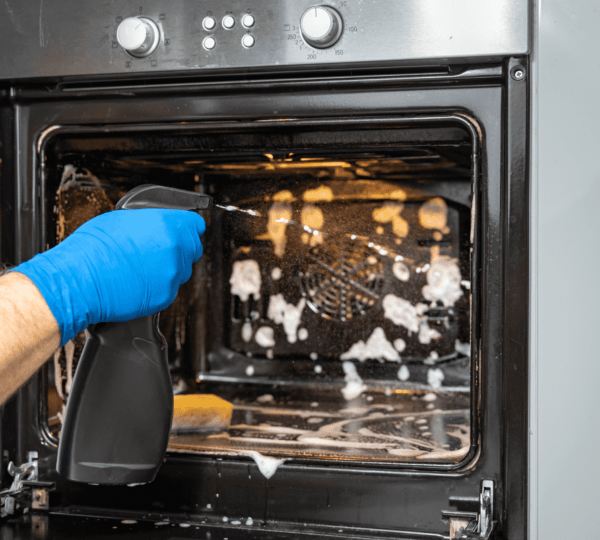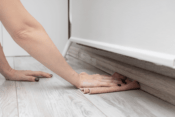
How to Clean and Disinfect Your Kitchen at Home: A Comprehensive Guide
Your kitchen is the heart of your home, where meals are prepared and memories are made. But it’s also a hotspot for bacteria and germs, making it essential to keep it clean and disinfected. A dirty kitchen can lead to foodborne illnesses and unpleasant odors, so regular cleaning is crucial for maintaining a healthy and hygienic environment.
According to the Centers for Disease Control and Prevention (CDC), foodborne illnesses affect millions of people in the United States each year. Many of these illnesses can be traced back to contaminated food, which can occur due to improper handling, storage, or preparation in a dirty kitchen.
In this comprehensive guide, we’ll provide you with step-by-step instructions on how to clean and disinfect your kitchen effectively. We’ll cover everything from cleaning countertops and appliances to sanitizing utensils and preventing cross-contamination. By following these guidelines, you can create a safe and hygienic kitchen that will protect your family’s health.
Why Clean and Disinfect Your Kitchen?
Cleaning your kitchen regularly is crucial not just for appearance but for hygiene. A kitchen can be a breeding ground for bacteria like E. coli, Salmonella, and Listeria, which can lead to foodborne illnesses. According to the Centers for Disease Control and Prevention (CDC), one in six Americans gets sick from contaminated food every yearCharles Gerba**, a microbiologist at the University of Arizona, has spent over 30 years studying germs in homes. He emphasizes, “The kitchen is often dirtier than the bathroom in terms of bacteria count.” Dr. Gerba’s research shows that your kitchen sponge and sink harbor more germs than your toilet seat . So, cl disinfecting your kitchen should be a top priority to prevent harmful bacteria from spreading.
Step-by-Step Guide to Cleaning and Disinfecting Your Kitchen
1. Start by Decluttering
Before you begin cleaning, remove all unnecessary items from your countertops, sink, and other surfaces. This makes it easier to clean thoroughly.
- Tips: Place small appliances like toasters and blenders away from areas that are likely to get dirty. Store utensils and spices in drawers or cabinets.
2. Clean Countertops
Your countertops come into contact with raw foods, liquids, and spills daily. Cleaning them properly is essential to prevent cross-contamination.
- How to clean: Use warm soapy water and a microfiber cloth to wipe down the surfaces. For deeper cleaning, use a mixture of water and vinegar (equal parts).
- Disinfecting: After cleaning, apply a disinfectant spray. According to the Environmental Protection Agency (EPA), hydrogen peroxide and bleach-based products are effective at killing most household germs .
Expert Tipilip Tierno**, a clinical professor of microbiology and pathology, recommends letting the disinfectant sit for at least five minutes before wiping it off to allow it to work properly .
3. **Cleaning the kitchen sink is another hotspot for bacteria. From washing raw meats to rinsing produce, your sink needs special attention.
- How to clean: Start by scrubbing the sink with baking soda, which acts as a mild abrasive. Rinse with hot water.
- Disinfecting: Pour one cup of hydrogen peroxide or vinegar down the drain and let it sit for 5–10 minutes before rinsing. You can also use a disinfectant wipe on the faucet handles.
Fun Fact: A study by NSF International found that 45% of kitchen sinks are contaminated with coliform bacteria . Cleaning and disinfecting the siny helps keep harmful germs at bay.
4. Appliance Care: Stovetop, Oven, and Microwave
Appliances can accumulate grease, food particles, and grime.
- Stovetop: Remove burner grates (if applicable) and soak them in hot soapy water. Wipe down the surface using a degreasing cleaner.
- Oven: Use a commercial oven cleaner or a homemade paste of baking soda and water. Scrub, let it sit for a few hours, and wipe off with a damp cloth.
- Microwave: Heat a bowl of water with lemon slices for five minutes. The steam will loosen food particles, making it easy to wipe the inside clean.
5. Wipe Down Cabinet Doors and Drawers
Don’t forget to clean your cabinet doors, especially around handles where oils and grime can accumulate.
- How to clean: Use a damp cloth with mild detergent to clean cabinet doors, and follow up with a disinfecting wipe.
6. Clean the Fridge
Your refrigerator can harbor spills, mold, and bacteria, especially in the vegetable crisper or where raw meat is stored.
- How to clean: Remove all food items, and use warm soapy water to wipe down shelves and drawers. For tough stains, use a baking soda paste.
- Disinfecting: Spray a mixture of vinegar and water, then wipe clean with a dry cloth.
Pro Tip: According to a 2021 study published in the Journal of Food Protection, keeping your fridge at 40°F or below helps prevent bacterial growth .
7. **Sanitize Your Sponges and Towelleaning tools can also be a source of germs. Sponges can be sanitized by soaking them in a mixture of water and bleach for 5 minutes or microwaving them for 1 minute. Change kitchen towels frequently, and wash them in hot water.
Recent Research on Kitchen Hygiene
A study from the Journal of Environmental Health found that improperly cleaned cutting boards and knives contribute to cross-contamination between raw meat and fresh vegetables, increasing the risk of foodborne illness . This highlights the importance of not only cleaning disinfecting surfaces that come into contact with raw food.
Furthermore, a 2022 report by the Food Standards Agency emphasized that kitchen sponges and dishcloths are among the most contaminated items in a home kitchen. Experts recommend replacing sponges and dishcloths every two weeks to reduce the risk of spreading bacteria.
Maintaining a Clean Kitchen: Daily, Weekly, and Monthly Tasks
- Daily: Wipe down countertops, clean the sink, sanitize sponges, and sweep the floor.
- Weekly: Mop the floor, clean the fridge, wipe cabinet doors, and sanitize handles.
- Monthly: Deep clean appliances, disinfect trash cans, and wipe down walls or backsplash areas.
Conclusion: Keeping your kitchen clean and disinfected is essential for the health and well-being of your family. With the right cleaning techniques and regular maintenance, you can minimize the risk of bacteria and ensure your kitchen is always a safe space for preparing meals. Remember, it’s not just about making your kitchen look good; it’s about protecting your health.
Citations:
- CDC, “Foodborne Illness,” https://www.cdc.gov/foodborneburden/index.html
- Gerba, C., University of Arizona, Research on Kitchen Germs.
- EPA, “List N: Disinfectants for Use Against SARS-CoV-2,” https://www.epa.gov
- Tierno, P., Clinical Professor of Microbiology, New York University.
- NSF International, Kitchen Germ Study.
- Journal of Food Protection, “Refrigeration and Bacterial Growth.”
- Journal of Environmental Health, “Cross-Contamination in the Kitchen.”
- Food Standards Agency, “Kitchen Contamination Study.”











